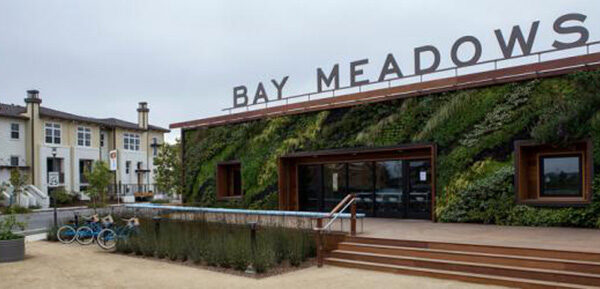News
Bay Meadows Touted as Model of Smart Growth
San Jose Mercury News reporter Aaron Kinney shares Bay Meadows’ construction progress, and previews what’s to come. Read more about the “smart growth” at our new urban village taking shape in San Mateo on the Caltrain line!
SAN MATEO — Legendary jockey Russell Baze doesn’t race here anymore, but you can tour a model home on Baze Road, the street that bears his name. Nearly five years after the demolition of historic Bay Meadows racetrack, one of the largest housing developments in the Bay Area is rising from the dust at last. And though only a small portion of the 83-acre project has been built, homes are already selling — briskly.
Local planners and policymakers tout the venture, dubbed Bay Meadows Phase II, as the embodiment of sustainable growth: building new residential clusters around public transportation hubs.
When it’s finished about five years from now, the mixed-use project abutting the Hillsdale Caltrain station will comprise more than 1,100 housing units, up to 1.5 million square feet of office space, 90,000 square feet of retail space and 15 acres of parks. The property will also be home to a new high school campus for the elite Nueva School, an academy for gifted children. The private school, which administers an IQ test to applicants, is expanding from its pre-kindergarten-to-eighth grade format. Nueva’s high school will open this fall on the campus of College of San Mateo, then move to Bay Meadows in 2014.
All that comes on top of more than 700 homes and apartments created by Bay Meadows Phase I, an adjoining neighborhood built on the old practice track. That project, begun in 1997, includes several restaurants, two coffee shops and a Whole Foods Market.
The second phase in particular provided a rare opportunity to build a community from scratch, said Joshua Hugg, program manager for the Housing Leadership Council of San Mateo County, a nonprofit that advocates for new housing for people of all incomes.
“This is what it looks like when all the pieces of the puzzle fit together,” said Hugg, who also sits on the San Mateo County Planning Commission, though he joined in 2012 after the second phase was approved. He called the project a chance to “really demonstrate the potential of transit-oriented development.”
